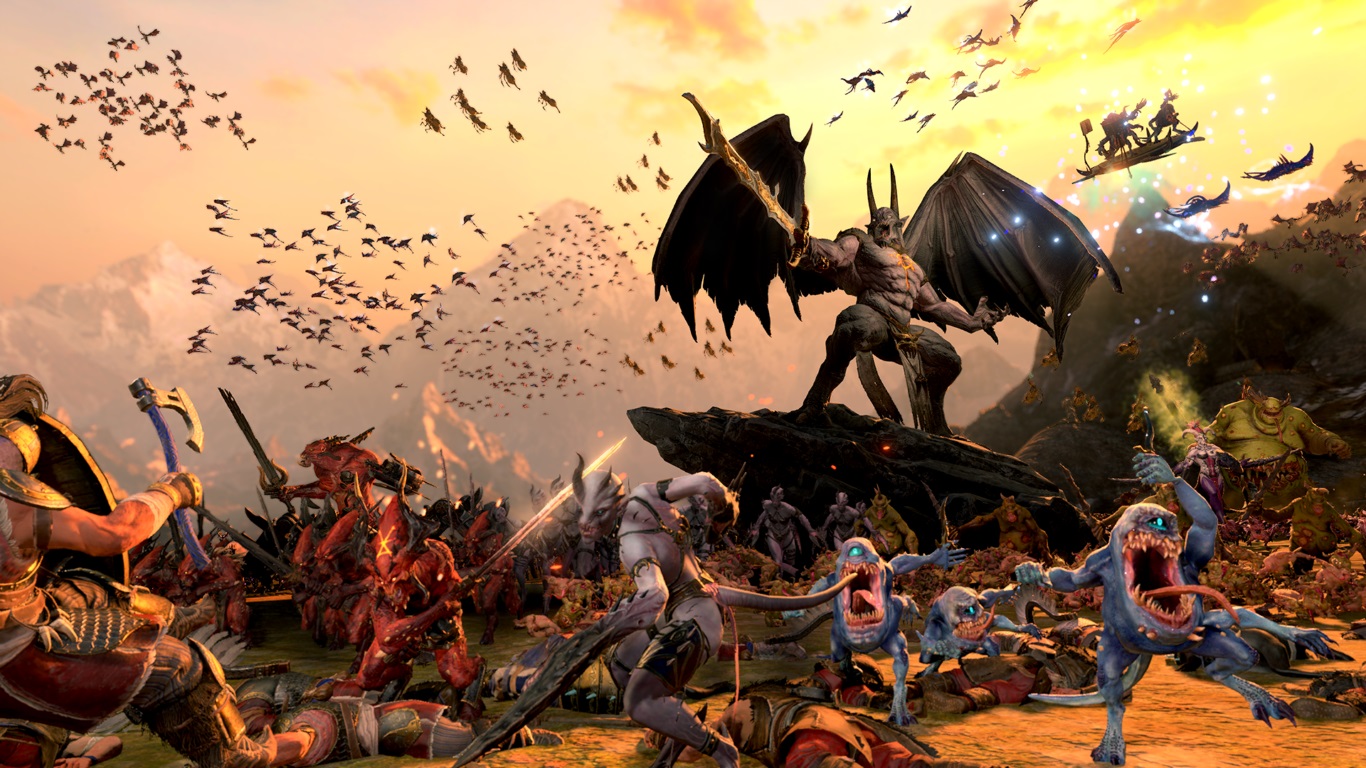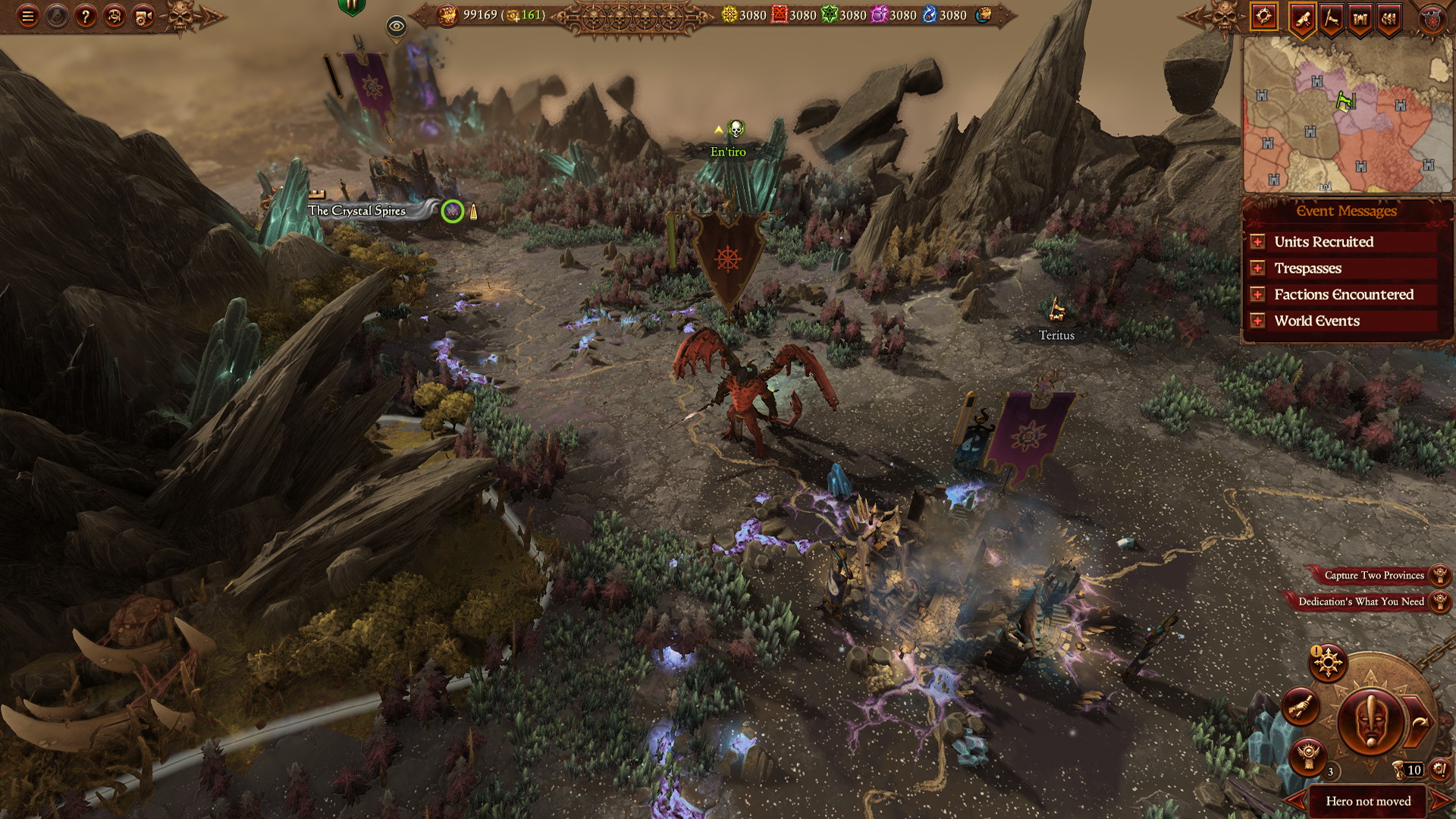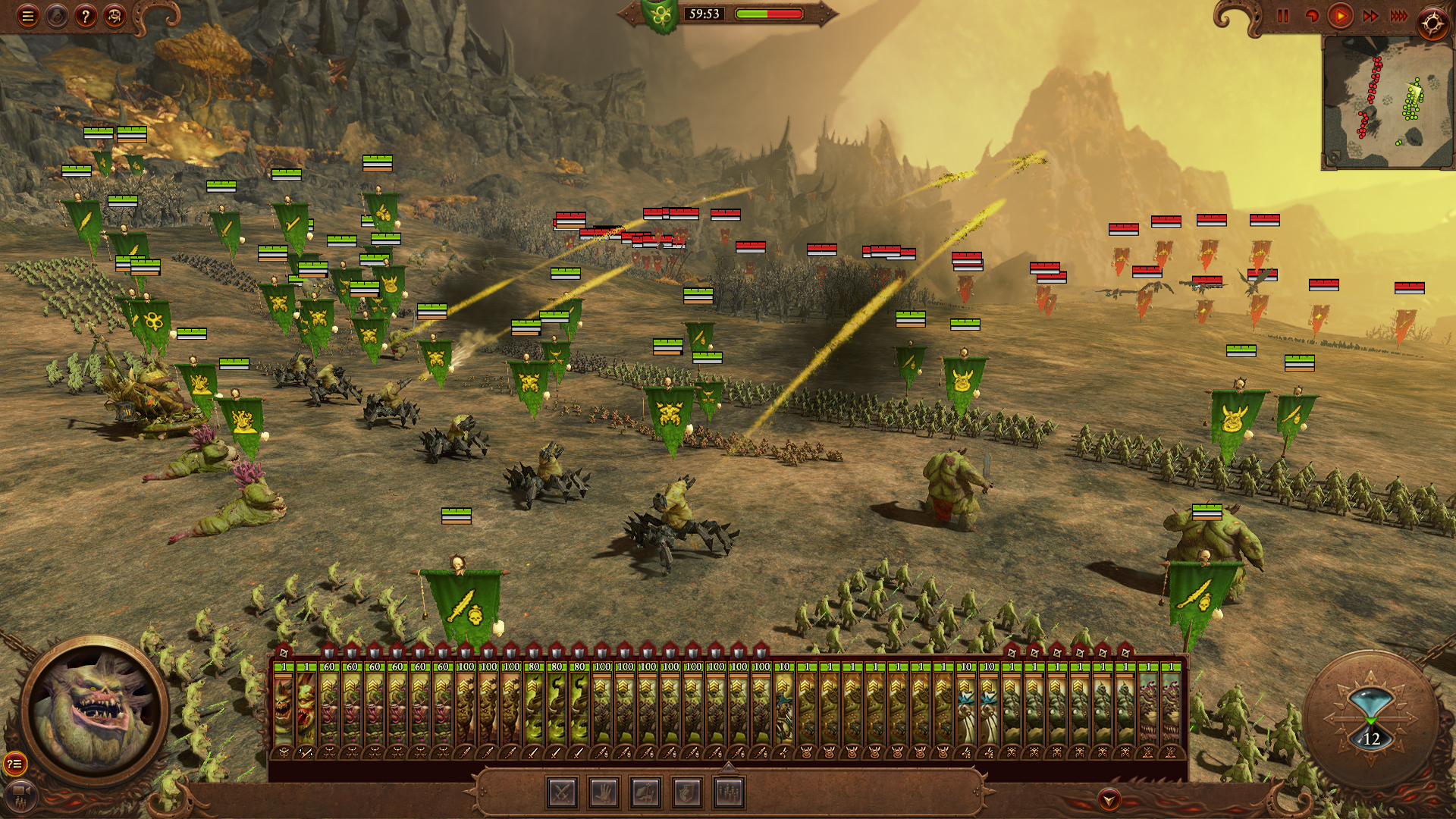Total War: Warhammer 3 is cleaner, meaner and embraces chaos
Chaos daemons, war bears and more clash in the final instalment of Total War: Warhammer 3

For a long time Total War and Warhammer seemed like logical bedfellows, but Creative Assembly's grand strategy game was pretty much all about historical scenarios rather than grimdark fantasy. But that all changed in 2016 with Total War: Warhammer.
The game successfully blended both the complex campaign and 3D battle modes of traditional Total War with the asymmetric and hugely varied factions, creatures and lore of fantasy Warhammer. Such was the success of this formula that Total War Warhammer 2 followed, introducing the New World and a plethora of fresh races and factions to command and conquer.
Now, we've entered the end times for the series with Total War: Warhammer 3 marking an end to the trilogy. And it plans to end with a bang.
Not only does TW:W3 introduce a hefty eight factions to the fray, but it also builds and refines the formula established in the previous games to a fine point.
I've not had enough time to plumb the Marianas Trench-like depth of TWW3 yet, but my impressions are pretty positive so far.
Clean cuts

As soon as the game starts, you get the option of either diving headfirst into the main campaign or taking on a prologue story to set the scene. The latter helps coach new players through the game's mechanics, as well as letting veterans dust off their strategy skills.
I'm no stranger to Total War games, but I opted for the prologue, in which I filled the boots of Kislev Prince Yuri on a quest into the harsh and frozen Chaos Wastes. There, I had to find out what had happened to a god-bear the Kislevites worship.
Get instant access to breaking news, the hottest reviews, great deals and helpful tips.
Not only does this help give me a taste of a new Total War faction — inspired by the Medieval-era Rus peoples of Russia — but it gives me a chance to appreciate some of the changes in Warhammer 3.
In a nutshell, this is the Total War Warhammer many PC gamers know and love, but with fresh factions and new world map to explore.
Tweaks to the interface and some new streamlining options help take out the initial sting of Total War complexity. Don't get me wrong: The game is deep, even at a first glance. But all the information it serves up, both on the campaign map and in individual battles, feels more digestible.
For example, it's now easier to see how likely a diplomatic offer is to succeed, thanks to a color-coded rating system. There are a lot of characters who all gain skill as the campaign progresses, but a new auto-skill option lets the AI take care of that for you. That means less fiddling around in menus for a raft of generals whom you're not really fussed about.
You can also now trade settlements with other factions, allowing you to offload a single settlement to get another one. This feature might help you complete the set in a province, rather than invade it, potentially ruining a perfectly good alliance. Sieges are also faster than before, with defending garrisons taking attrition straight away rather than after ten or so turns, forcing them to attack or desperately wait for reinforcements.
All this could and should make it easier to press on with making big tactical decisions on the campaign map, rather than carry out time-sapping admin busywork as the game progresses.
On the battle map, it’s war as usual, with a few neat additions. For example, static troops can now brace automatically against charges, meaning they won’t be scattered as much by a group of charging monstrosities. But the flip side is that a savvy general will make sure to flank and charge moving troops for maximum effect.
Embracing the chaos

The clutch of new factions also promise to be interesting. Kislev seems to offer a relatively strong-yet-flexible roster of troops, from gunners to a huge magical polar bear. Grand Cathay, inspired by ancient Chinese dynasties, has a more defensive lineup.
The Ogre Kingdoms, unsurprisingly, have a bunch of big burly ogres. And the demon factions are flush with damage-dealing creatures, which posses a range of abilities that make life miserable for anything facing them.
These demon factions, which cover the four chaos gods of Khorne, Nurgle, Tzeentch and Slaanesh, promise to be rather interesting, with different traits and approaches to war.
In one battle, I had a Khorne army that gave me a clutch of demons and armored Chaos Warriors, all optimized for damage output. They faced off against another Khorne army, as well as an army in the service Nurgle, which saw poison- and bile-spewing monsters creep across the map, gradually debilitating my troops rather than outright destroying them. I lost this fracas.
But using this knowledge, I then entered another battle, this time on the side of Nurgle and facing off against the famously tough Dwarven forces. By wearing the dwarves down with poison, as well as using well-established flanking and cycle-charging tactics from Total War games of yore, I manage to overcome a well-armed and armored force.

At their core, all Total War battles are effectively an elaborate game of rock-paper-scissors, with armored swordsmen beating spearmen, cavalry beating swordsmen and spearmen beating cavalry.
But Total War: Warhammer brought in a degree of asymmetry. Some factions lacked good cavalry or ranged units, but made it up in magic and monsters. Others had a killer artillery core, but weak front-line fighters. This all makes for more interesting battles than the historic Total War games.
Now, with the introduction of the daemon factions, as well as the ogres and the new human factions, TW:W3 promises to be one of the most interesting Warhammer games around.
Faction tactics, traits and strategies, also have a deeper effect on the campaign map. For example, the Ogre Kingdoms don’t care for settlements, and instead rove around in camps in their quest to eat up pretty much everything around. Tzeentch, though, is all about manipulating the map, using magic to wrestle the control of settlements from their owners, or forcing war between factions.
The sheer depth here means I’ve not even started to scratch the surface. The past two Total War: Warhammer games deliver compelling campaigns that got even bigger with free and paid DLC updates. But TW:W3 seems to have a scintillating set of campaigns from the very start. And with some refinements, it should be easier than ever to jump feet-first into the grim world of Warhammer and the deep strategy of Total War.
Total War: Warhammer 3 will come out on February 17, and I expect I'll be thoroughly wrapped up in it by then. Not only does the game by itself look vast, but it’s likely to get larger, if Creative Assembly adds in new campaigns and content. I also expect to see a Moral Empires campaign come along in time, which will basically combine the maps and factions of all three games together into an epic war of domination.
The third Total War: Warhammer game might mark the end of the series for Creative Assembly. But in reality it’s also just the beginning, and I’m excited to see where it goes.

Roland Moore-Colyer a Managing Editor at Tom’s Guide with a focus on news, features and opinion articles. He often writes about gaming, phones, laptops and other bits of hardware; he’s also got an interest in cars. When not at his desk Roland can be found wandering around London, often with a look of curiosity on his face.
